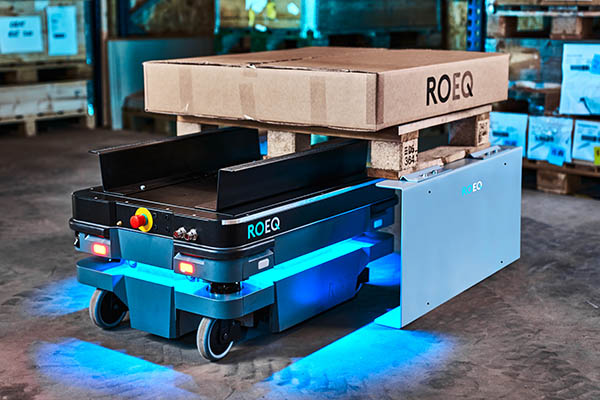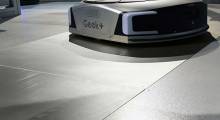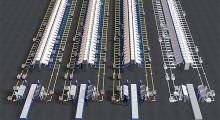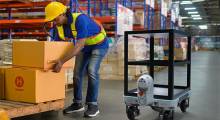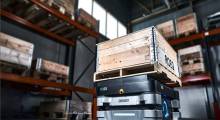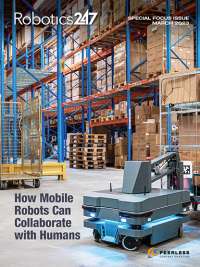In the timeline of robotics history, autonomous mobile robots are the new kids on the block compared with traditional industrial robots and automated guided vehicles. But their popularity has risen in the past few years, spurred by the potential business benefits, widespread labor shortages, and the growth of online retail.
The global market for autonomous mobile robots (AMRs), which was valued at $1.9 billion (U.S.) in 2019, is expected to grow at a compound annual growth rate (CAGR) of 19.6% from 2020 to 2027, according to a 2021 report from Grand View Research. In the middle of this rush to deploy AMRs, an easily remedied but significant knowledge gap has emerged between misconceptions of AMR functionality and the reality of successful deployments.
The widespread perception that mobile robots are complete systems that are ready to deploy on material transport applications out of the box is incorrect. The reality is that they are platforms for deploying mobile autonomous automation—components within a complete robotics system rather than an entire system in themselves.
To deploy AMRs successfully and safely in real-world applications, you need compatible, standardized mobile robotic equipment (MRE) such as top rollers and conveyors, cart and tugs, lifters, and rack solutions—plus software to bring these elements together.
MREs— the end-of-arm tooling of the mobile robot world
Just as end-of-arm tooling (EOAT) make it possible for industrial robots such as collaborative robot arms to actually grasp and manipulate objects, mobile robotic equipment makes it possible for an AMR to successfully collect goods and transport them through a facility. And just as cobots are components within an overall automation deployment that requires EOAT, AMRs are components of a complete mobile automation deployment that requires MREs.
Without doubt, not all equipment is created equal, and there are significant differences in terms of functionality, usability, and compatibility among various offerings, but without MRE of some sort, it simply isn’t possible to deploy an AMR at all for any application.
In preparation for this article, I asked some mobile robot deployment experts for their views on the role and importance of MRE. Ed Mullen, vice president of sales at AMR maker Mobile Industrial Robots (MiR) North America, commented: “Without top modules, carts, and other mobile robotics equipment, autonomous mobile robots couldn’t do what they’re meant to do: easily, efficiently and safely perform multiple material handling tasks across manufacturing facilities and warehouses.”
“The appropriate MRE is absolutely essential for a successful AMR deployment,” said Dana Poling, robotics business developer at C&E Advanced Technologies. “Just like installing a traditional six-axis robot with the appropriate end effector, designing and/or selecting the right MRE to interface the AMR with your product completes the hardware design of the robot system.”
And Cale Harbour, vice president of product marketing at Advanced Control Solutions LLC, said: “With the expansion of capabilities in the AMR market, having developed MRE allows for a greater variety of solutions and industries to get up and running quickly at a lower cost with a greater ROI [return on investment]. The ability to pull completely developed solutions into the manufacturing space without the time and expense of design and fabrication allows for a manufacturing facility to realize an improved workflow in a shorter amount of time.”
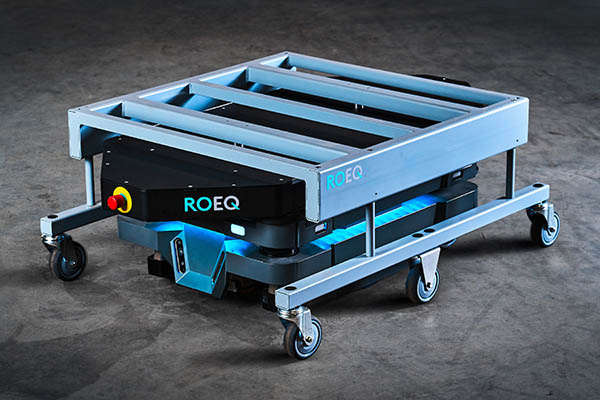
Avoid DIY remorse
Harbour raises an important point. This knowledge gap around the importance of professionally designed, fully functional mobile robotic equipment has given rise to a trend of companies trying to build and deploy their own equipment.
I know this because a significant number of our end users are former DIYers in the MRE space. They have tried to design and deploy their own MRE and, despite several design tweaks and fresh iterations, they are ready to embrace standardized MRE solutions.
Designing and deploying your own MRE is a lot more expensive, complex, and time-consuming than many expect, especially when it comes to issues around safety compliance. The reality is that in many cases, building and testing your own MRE turns out to be at best a false economy and at worst, an expensive folly.
Furthermore, self-built MRE comes from outside the ecosystem of the AMR you have invested in, which almost inevitability leads to regulatory compliance, compatibility, and performance issues. In short, those who build their own MREs tend to regret it later.
Embracing standardized MRE
By contrast, standardized, industry-ready mobile robotic equipment is guaranteed to work out of the box with a minimum of fuss, which lowers the total cost of ownership (TCO) for the overall system, reduces ROI times, and provides overall performance enhancements.
In addition, professionally designed MRE is tested and proven to work safely and effectively with chosen mobile robots. Such MREs can complete an AMR deployment, ensure a safe environment for human workers, and increase productivity.
As noted above, however, not all equipment is created equal. Make sure the MRE you invest in is compatible with your AMR. And look out for truly complete MRE packages; these will include software designed to enable easy deployments and ensure compliance with safety regulations and requirements. This software component alone can save a huge amount of time and expense during the deployment process.

About the author
Shermine Gotfredsen is global sales director at mobile robot equipment supplier ROEQ and an advisory board member at Nordbo Robotics in Denmark. She also serves as a consultant at SG Service & Consultancy. Gotfredsen previously worked at cobot maker Universal Robots A/S and gripper provider OnRobot A/S.
Article topics
Email Sign Up

